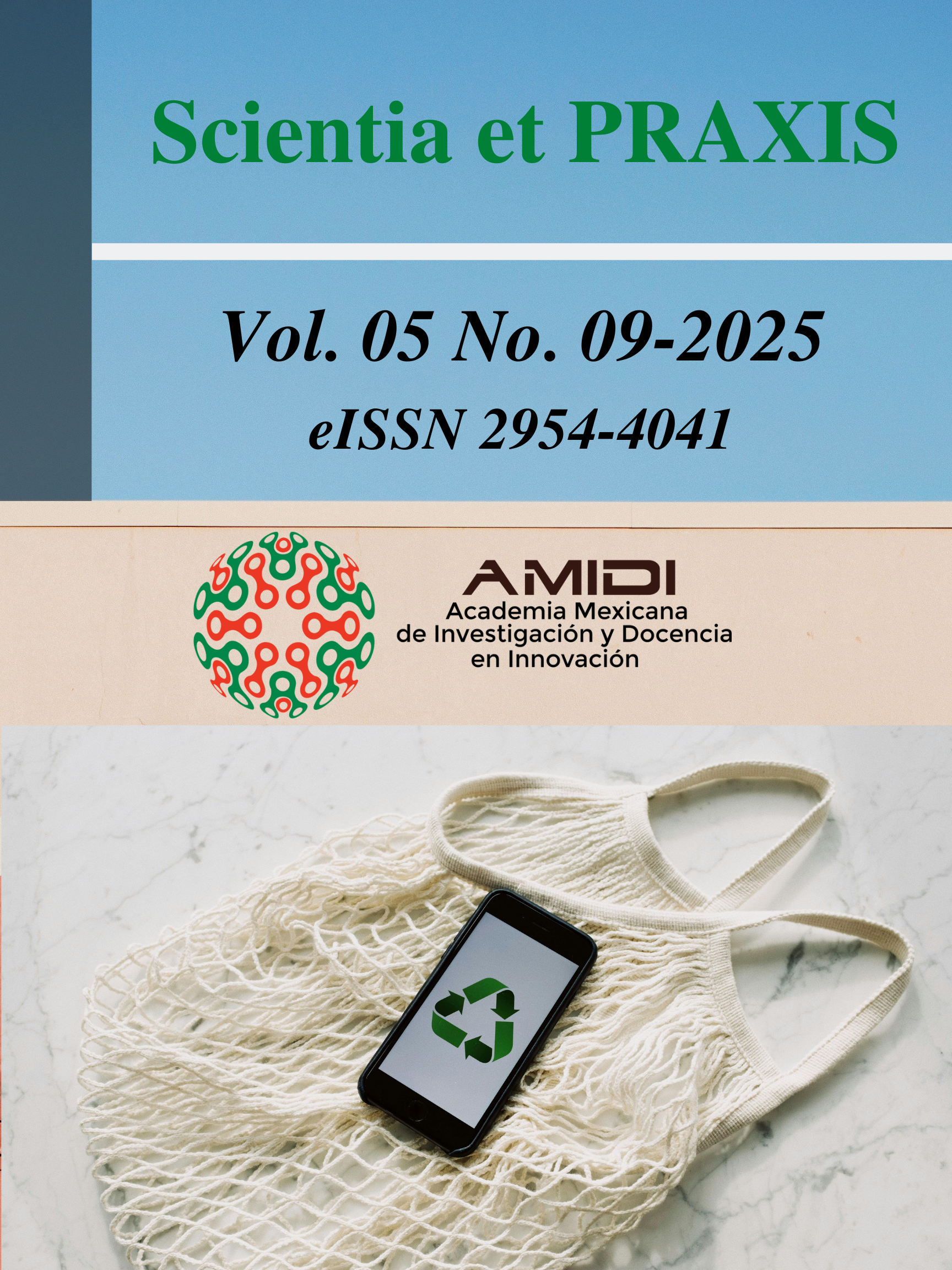Feasibility of Succession in Family Businesses based on the Integrative Model: Case Mexico
DOI:
https://doi.org/10.55965/setp.5.09.a3Keywords:
succession, innovation, family-owned businesses, strategy, MexicoAbstract
Context. Most Mexican businesses are family-owned, and their continuity depends on effective generational succession. However, many of these businesses lack formal transition structures, which could jeopardize their continuity and sustainability.
Problem. Family-owned businesses (FOBs) face the challenge of structuring their succession processes clearly and effectively to ensure continuity and sustainability. This study aims to examine the structuring of succession processes in Mexican family businesses and to identify the factors that influence the clarity and effectiveness of these mechanisms.
Purpose. To assess the suitability of Mexican Stock Exchange Funds for generational transition and identify key organizational components for structured succession. The study supports SDG8 by promoting professionalized succession and sustainable business continuity.
Methodology. Empirical research was conducted in Jalisco between 2020 and 2022, collecting data from 337 family businesses. The correlation between the clarity of succession criteria and factors such as governance and company size was evaluated. Classification models were compared using indicators such as precision, recall, accuracy, and F1 score.
Theoretical and practical findings. The results indicate that firms with formal governance structures, such as family protocols, boards of directors, and share transfer plans, have strict succession rules. The K-Nearest Neighbors (KNN) model showed the best performance in terms of accuracy (0.8038), F1 score (0.7044), and precision (0.8038). Logistic regression had the highest AUC value (0.8654), indicating a high discrimination ability. The Naive Bayes model had the highest recall value (0.6944), which is relevant for the identification of more positive cases.
Originality. This study is original in applying predictive models to succession in family-owned businesses, providing empirical evidence and contributing to SDG 8.
Conclusions and limitations. Family-owned businesses in Jalisco often lack succession planning, which risks their continuity. Strengthening formal mechanisms can improve transitions. The study is limited to Jalisco, Mexico; further research in other contexts and the institutionalization of succession are recommended.
Downloads
References
Ahrens, J., Landmann, A., & Woywode, M. (2015). Gender preferences in the CEO successions DOI: https://doi.org/10.5465/ambpp.2015.14257abstract
of family firms: Family Characteristics and human capital of the successor. Journal of Family Business Strategy, 6(2), 86-103. https://doi.org/10.1016/j.jfbs.2015.02.002 DOI: https://doi.org/10.1016/j.jfbs.2015.02.002
Arteaga, R., & Menéndez-Requejo, S. (2017). Family Constitution and Business Performance: Moderating Factors. Family Business Review, 30(4), 320-338. https://doi.org/10.1177/0894486517732438 DOI: https://doi.org/10.1177/0894486517732438
Bennedsen, M., Nielsen, K. M., Pérez-González, F., & Wolfenzon, D. (2006). Inside the Family Firm: The Role of Families in Succession
Decisions and Performance. The Quarterly Journal of Economics, 122(2), 647-691. http://dx.doi.org/10.2139/ssrn.925650 DOI: https://doi.org/10.2139/ssrn.925650
Berns, K. V., & Klarner, P. (2017), A review of the CEO succession literature and a future research program. Academy of Management Perspectives 31(2), 83-108. https://doi.org/10.5465/amp.2015.0183 DOI: https://doi.org/10.5465/amp.2015.0183
Bruhn-Jensen, K. (2014). La comunicación y los Medios. Fondo de Cultura Económica. https://www.fondodeculturaeconomica.com/Ficha/9786071624130/F
Cabrera-Suárez, K., De Saá-Pérez, P., & García-Almeida, D. (2001). The Succession Process from Resource- and Knowledge-Based View of the Family Firm. Family Business Review, 37-46. https://doi.org/10.1111/j.1741-6248.2001.00037.x DOI: https://doi.org/10.1111/j.1741-6248.2001.00037.x
Castillo-Esparza, M. M. G. C., Cuevas-Pichardo, L. J., & Montejano-García, S. (2022). Innovation in Mexico: patents, R&D expenditure and human capital. Scientia et PRAXIS, 2(04), 82-103. https://doi.org/10.55965/setp.2.coed.a4 DOI: https://doi.org/10.55965/setp.2.coed.a4
Duckworth-Chambless, T., Quinones, A., & Mathiassen, Lars (2023), “A Model to Manage Succession in Family Business”. Proceedings of The Twelfth International Conference on Engaged Management Scholarship, Available at SSRN: https://ssrn.com/abstract=4322700 or http://dx.doi.org/10.2139/ssrn.4322700 DOI: https://doi.org/10.2139/ssrn.4322700
Ge, B., & Campopiano, G. (2022). Knowledge management in family business succession: Current trends and future directions. Journal of Knowledge Management, 26(2), 326-349. https://doi.org/10.1108/JKM-09-2020-0701 DOI: https://doi.org/10.1108/JKM-09-2020-0701
Gedajlovic, E., Lubaktin, M. H., & Schulze, W. S. (2004). Crossing the threshold from founder management to professional management: A governance perspective. Journal of Management Studies, 41, 899-912. https://doi.org/10.1111/j.1467-6486.2004.00459.x DOI: https://doi.org/10.1111/j.1467-6486.2004.00459.x
Gersick, K. E., Lansberg, I., Desjardins, M., & Dunn, B. (1999). Stages and Transitions: Managing Change in the Family Business. Family Business Review, 7(4), 287-297. https://doi.org/10.1111/j.1741-6248.1999.00287.x DOI: https://doi.org/10.1111/j.1741-6248.1999.00287.x
Gimenez, E., & Novo, J.A. (2020), A theory of succession in family firms. Journal of Family and Economic Issues 41, 96-120. https://doi.org/10.1108/JFBM-09-2020-0088 DOI: https://doi.org/10.1007/s10834-019-09646-y
Hoffmann, C., Wulf, T., & Stubner, S. (2014). Understanding the performance consequences of family involvement in the top management team: The role of long-term orientation. International Small Business Journal 34(3), 345-368. https://doi.org/10.1177/02662426145505 DOI: https://doi.org/10.1177/0266242614550500
Instituto de Información Estadística y Geográfica de Jalisco (IIEG, 2022). Afectaciones económicas a dos años de la pandemia: NEGOCIOS. Módulo especial de empresas familiares, (Dirección de Información Estadística Económica y Financiera, 2022. Retrieved May-02-2025, from: https://iieg.gob.mx/ns/wp-content/uploads/2022/06/Afectaciones_economicas_a_2a_de_la_pandemia_Negocios_20220620.pdf
Instituto Nacional de Estadística y Geografía (INEGI, 2025). Comunicado de prensa 05/25. Retrieved May-02-2025, from:
https://www.inegi.org.mx/contenidos/saladeprensa/boletines/2025/ce/CE_2024_RO_Nal.pdf,
Johnson, S., La Porta, R., Lopez-de-Silanes, F., & Shleifer, A. (2000). Tunneling. American Economic Review, 90, 22-27. http://nrs.harvard.edu/urn-3:HUL.InstRepos:30747165 DOI: https://doi.org/10.1257/aer.90.2.22
Le Breton-Miller, I., Miller, D., & Steier, L. P. (2004). Toward an Integrative Model of Effective FOB Succession. En D. R. Bagby, Entrepreneurship Theory and Practice, 305-328. Waco: Baylor University. Retrieved May-02-2025, from: DOI: https://doi.org/10.1111/j.1540-6520.2004.00047.x
Mejía-Trejo, J. (2021). Protection of traditional knowledge and its resulting innovation. Scientia et PRAXIS, 1(01), 1-8. https://doi.org/10.55965/setp.1.01.a1 DOI: https://doi.org/10.55965/setp.1.01.a1
Morck, R., Wolfenzon, D., & Bernard, Y. (2005). Corporate governance, economic entrenchment, and growth. Journal of Economic Literature 43, 655-720. DOI: 10.1257/002205105774431252 DOI: https://doi.org/10.1257/002205105774431252
Morris, M. H., Williams, R. O., Allen, J. A., & Avila, R. A. (1997). Correlates of success in family business transitions. Journal of Business Venturing 12, 385-401. https://doi.org/10.1016/S0883-9026(97)00010-4 DOI: https://doi.org/10.1016/S0883-9026(97)00010-4
Nave, E., Ferreira, J. J., Fernandes, C. I., do Paço, A., Alves, H., & Raposo, M. (2022). A review of succession strategies in family business: content analysis and future research directions. Journal of Management & Organization, 1-25. https://doi.org/10.1017/jmo.2022.31 DOI: https://doi.org/10.1017/jmo.2022.31
Nordqvist, M., Sharman, P., & Chirico, F. (2014). Family firm heterogeneity and governance: A configuration approach. Journal of Small Business Management 52, 192-209. https://doi.org/10.1111/jsbm.12096 DOI: https://doi.org/10.1111/jsbm.12096
Oslo Manual (OECD, 2018). Guidelines for Collecting, Reporting and Using Data on Innovation, 4th Ed.París, France. Organisation for Economic Cooperation and Development (OECD). https://www.oecd.org/en/publications/oslo-manual-2018_9789264304604-en.html
Pinzón-Castro, S. Y, & Maldonado-Guzmán, G. (2023). Open Innovation Effects in Eco-innovation and Business Performance in Mexican Manufacturing Firms. Scientia et PRAXIS, 3(06), 1-19. https://doi.org/10.55965/setp.3.06.a1 DOI: https://doi.org/10.55965/setp.3.06.a1
Porfırio, J.A., Felıcio, J.A. & Carrilho, T. (2020). Family business succession: analysis of the drivers of success based on entrepreneurship theory. Journal of Business Research115, 250-257. DOI: https://doi.org/10.1016/j.jbusres.2019.11.054
Pott, T., Schoen, J., Engel Loeb, M., & Hulme, F. (2001b). Effective retirement for family business owner-managers: Perspectives of financial planners - Part 2. Journal of Financial Planning, 14(7), 86-96. https://doi.org/10.18848/2327-798X/CGP/v21i02/1-19 DOI: https://doi.org/10.18848/2327-798X/CGP/v21i02/1-19
Ramón, J. F. C. (2021). Succession in the family business: the great challenge for the family. European Journal of Family Business, 11(1), 64-70. https://doi.org/10.24310/ejfbejfb.v11i1.12770 DOI: https://doi.org/10.24310/ejfbejfb.v11i1.12770
Ribeiro, J. R., Fernandes, C. I., Ramadani, V., & Hughes, M. (2023). Family business succession and innovation: a systematic literature review. Review of Managerial Science, 17(8), 2897-2920. https://doi.org/10.1007/s11846-022-00607-8 DOI: https://doi.org/10.1007/s11846-022-00607-8
Saaty, T., & Vargas, L. (2012). Models, Methods, Concepts & Applications of the Analytic Hierarchy Process. Springer. https://doi.org/10.1007/978-1-4614-3597-6 DOI: https://doi.org/10.1007/978-1-4614-3597-6
San Martín Reyna, J., & Durán Encalada, J. (2017). Radiografía de la empresa familiar en México. Universidad de las Américas Puebla - UDLAP. Retrieved May-10-2025 from: https://altexto.mx/radiografia-de-la-empresa-familiar-en-mexico-a3eux.html
Schenkel, M. T., Sehyun Yoo, S., & Kim, J. (2016). Not All Created Equal: Examining the Impact of Birth Order and Role Identity Among Descendant CEO Sons of Family Firm Performance. Family Business Review, 29(4), 380-400. DOI: https://doi.org/10.1177/0894486516659170
https://doi.org/10.1177/08944865166591
Sharma, P., & Rao, A. (2000). Successor attributes in Indian and Canadian family firms: A comparative study. Family Business Review, 13(4), 313-330. https://journals.sagepub.com/doi/10.1111/j.1741-6248.2000.00313.x DOI: https://doi.org/10.1111/j.1741-6248.2000.00313.x
Stewart, A. (2003). Help one another, use one another: Toward an anthropology of family business. Entrepreneurship Theory & Practice, 27(4) 383-396. https://journals.sagepub.com/doi/10.1111/1540-8520.00016 DOI: https://doi.org/10.1111/1540-8520.00016
Summatavet, K., & Raudsaar, M. (2015). Cultural heritage and entrepreneurship - inspiration for novel ventures creation. Journal of Enterprising Communities: People and Places, 9(1), 31-44. https://doi.org/10.1108/JEC-03-2013-0010 DOI: https://doi.org/10.1108/JEC-03-2013-0010
United Nations (n.d.) Sustainable Development Goals. Retrieved June 3, 2025, from: https://sdgs.un.org/es/goals
Published
How to Cite
Issue
Section
License
Copyright (c) 2025 Juan Pablo Patiño-Karam, Carlos López Hernández, Guillermo Sosa Gómez

This work is licensed under a Creative Commons Attribution-NonCommercial 4.0 International License.











